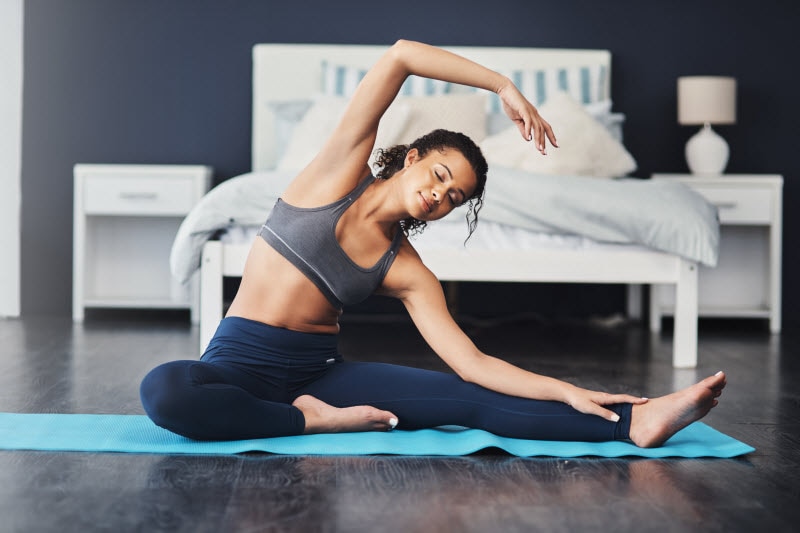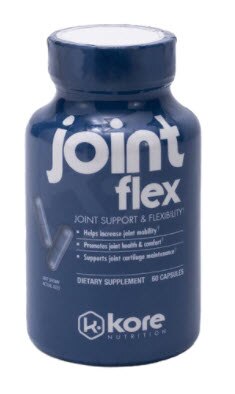Mobility is a hot topic these days, and it’s just as important for our everyday quality of life as it is for athletic performance. But what it is? And how and why is it different than flexibility? The difference can be made very simple: mobility pertains to joints, while flexibility pertains to muscles. More precisely, mobility is defined as the ability of a joint to move actively through its full range of motion, without pain or discomfort, while flexibility refers to the ability of a muscle or muscle group to passively lengthen fully.
What is mobility?
Think about it this way. If you go to a yoga class, and sweat profusely while trying in vain to touch your toes, that is a lack of flexibility. Your hamstrings are tight, and therefore short, rendering you unable to reach your feet. If, during your best squat, you can’t drop your rear end below the level of your knees, while your fellow gym-goers all seem to be doing low, full-depth squats, that’s a lack of mobility. Your hips, knees and ankles are unable to move to their full ranges of motion. But mobility and flexibility do go hand in hand; it doesn’t matter how flexible or stretchy your muscles are if your joints won’t allow the full range of motion.
There is also a misconception that lack of mobility is due only to muscular inflexibility. However, very flexible people who are able to drop into splits or easily throw a leg over their head often have problems performing basic movements or daily tasks because they don’t have the strength, balance, coordination or stability to support them.
Mobility is also dependent upon the nervous system. Neuromuscular control – the ability to produce controlled movement through coordinated muscular contractions – must be practiced or your central nervous system will actually limit your mobility as a means of keeping your body safe.
How do you know if you have good mobility?
A person with good mobility is able to perform functional movement patterns with no restrictions or “sticky spots” in the range of motion of those movements. Try these simple tests:
1. Can you descend into a full squat – the crease of the hip breaking the plane of the knee – with the feet shoulder-width apart and parallel, with the heels remaining flat on the floor?
2. While lying on your back with your knees bent, heels flat on the floor and arms raised perpendicular to the floor, can you drop one arm at a time straight overhead to the floor without arching your back?
3. While lying on your back with your legs straight out and your feet flexed, can your raise one leg to 90 degrees without the other leg lifting off the floor?
4. While sitting cross-legged on the floor with your arms crossed over your chest, can you rotate your chest and torso 90 degrees to one side without leaning to that side?
How can you improve mobility?
To have good mobility, you must have flexibility, but you also need muscular strength and stability to manipulate the joints. Mobility workouts focus on low-intensity movements to restore and improve range of motion by addressing flexibility, strength and stability all at once. They can be done after a long period of time sitting at your desk or in a car to work out kinks, or as pre-workout warmup when dynamic stretching – those controlled movements that prepare your muscles, ligaments and tendons for movement – is key.
Mobility exercises include leg swings, hip circles, spinal rotations, cat and cow stretches, bird dogs and quadruped rocks.
After a workout, or after doing a series of mobility exercises, you can switch your focus to static stretches, which are held in a single position for longer periods of time, typically greater than 30 seconds. Examples include a head-to-knee seated forward fold, seated butterfly stretch, overhead triceps stretch, standing quadriceps stretch and downward-facing dog.
What affects mobility?
It is a common misconception that young people don’t have to worry about their mobility. And while mobility can decrease with age, a lack of physical activity, too much sitting, daily stress, lack of sleep and poor diet can inhibit mobility at any age. Mobility can also be affected by other factors, such as activity level, hydration level, injury, or excessive muscle or fat tissue surrounding joints.
Can supplements improve mobility?
Supplements that improve joint health may also improve mobility. Kore Joint Flex provides glucosamine, chondroitin, turmeric and boswellia to support the formation and function of healthy joint tissue. It helps to increase joint mobility, promote joint health and comfort and support cartilage maintenance. Omega-3 fatty acids have also been shown to support healthy joints, and Kore Fish Oil provides the essential fatty acids EPA and DHA to support joint mobility.†
Featured products:
†These statements have not been approved by the Food and Drug Administration. These products are not intended to diagnose, treat, cure or prevent disease.



